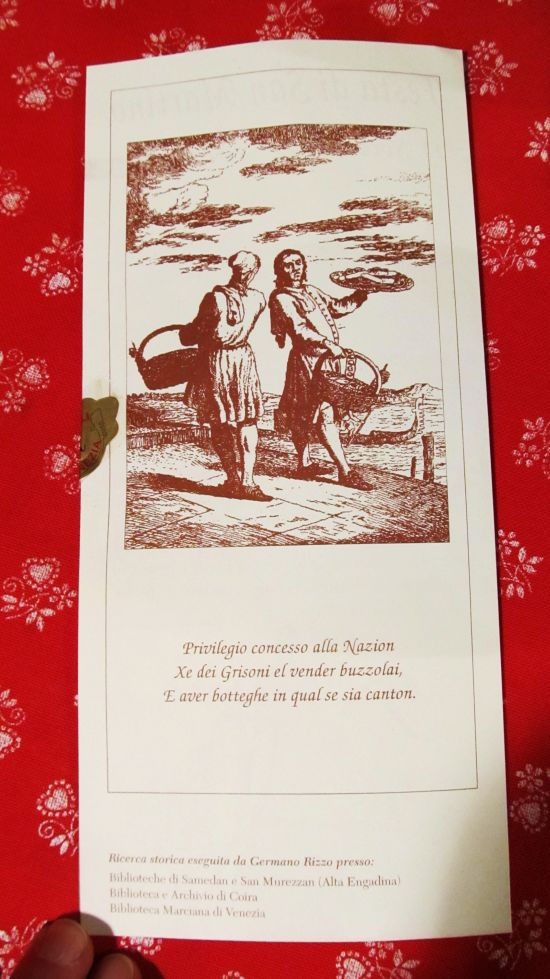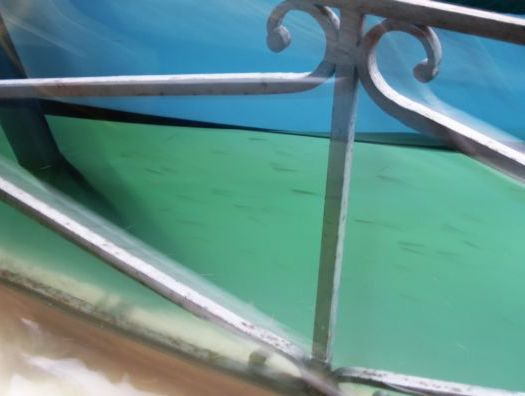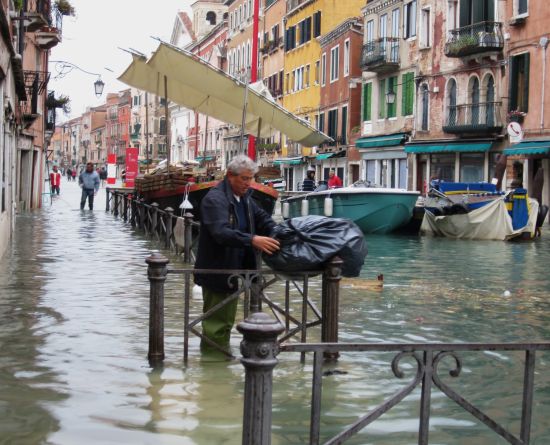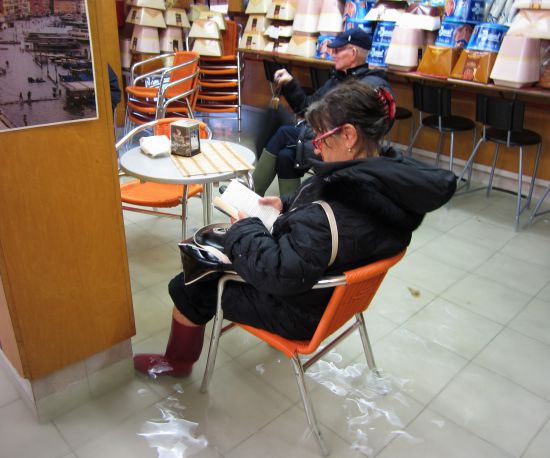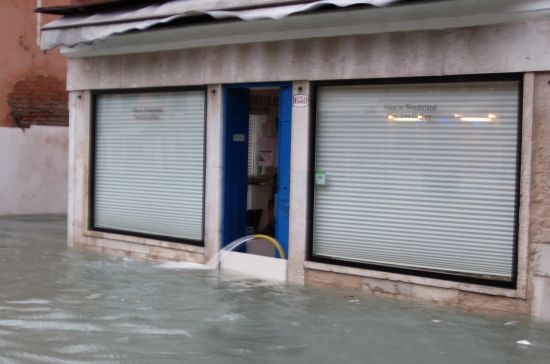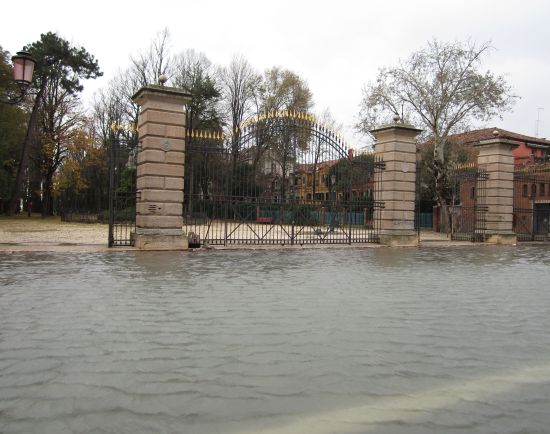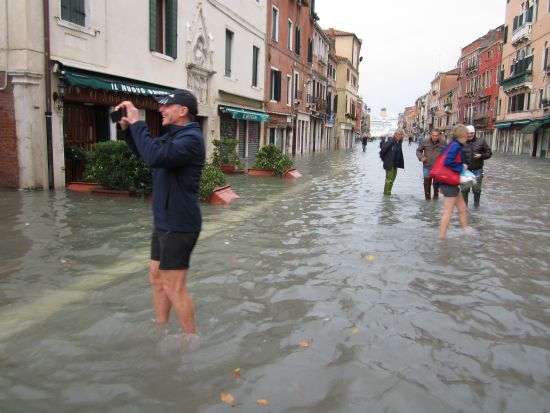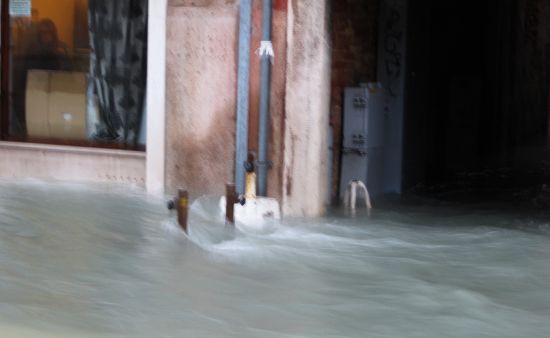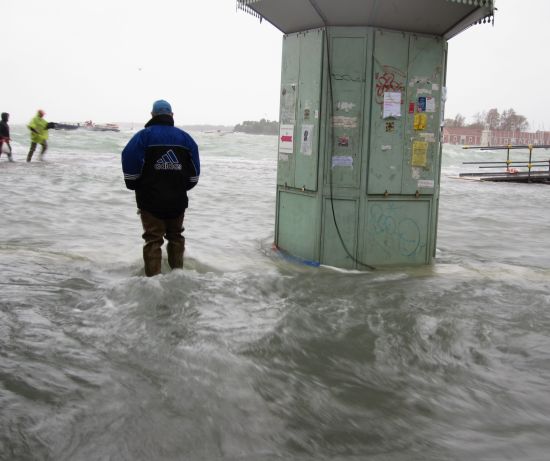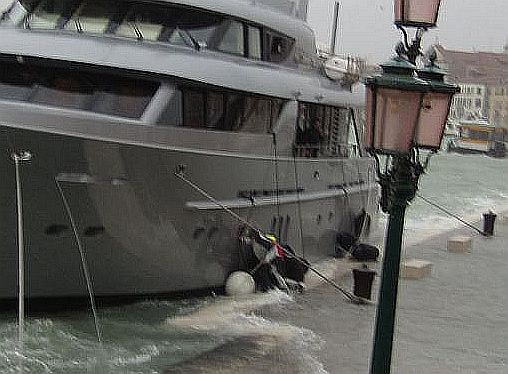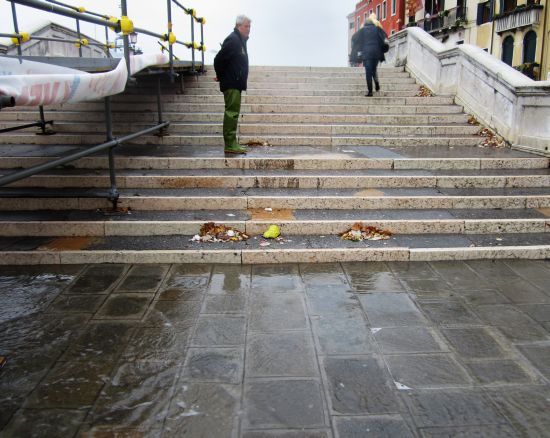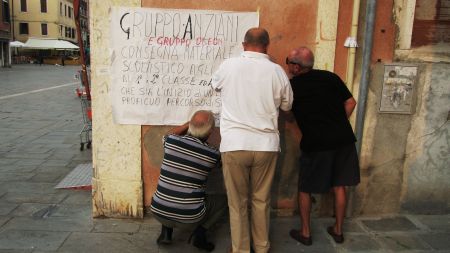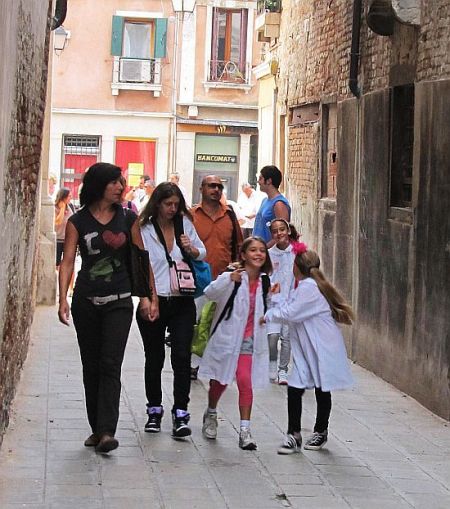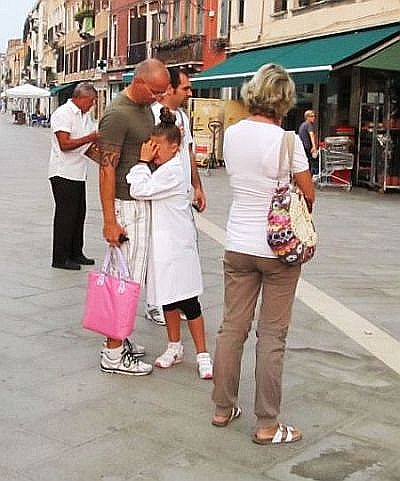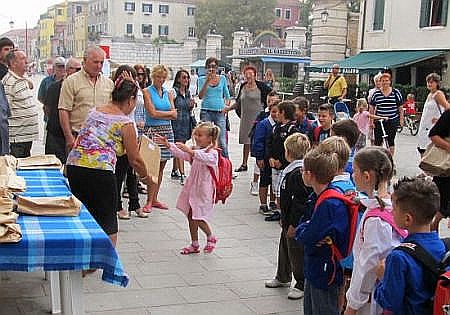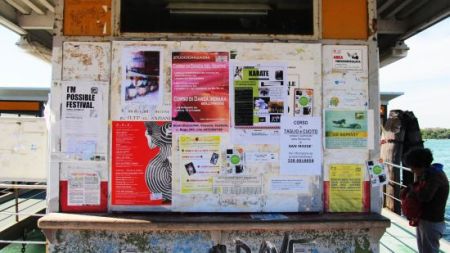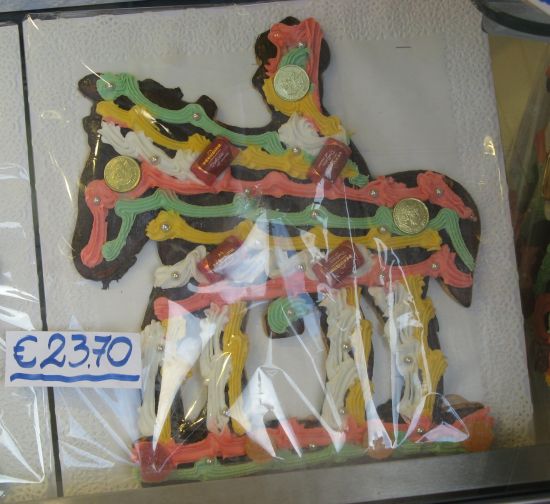
I don’t want Saint Martin’s day 2012 to be associated only with acqua alta and with the words which are being thrown about like fistfuls of gravel: “Disaster,” “Tempest,” “Catastrophe,” and so on.
There is no meteorological event which can get the upper hand of the cookie — the wonderful creation showing Saint Martin astride his horse, sometimes also with his sword upraised ready to cut his cloak in half, translated into dough, colored icing, sprinkles, and chunks of candy that cling to him and his trusty steed.
As I’ve mentioned elsewhere, these cookies come in all sizes, and all calibers of candy, and all are spectacularly overpriced. St. Martin would be ashamed of everybody if he could express himself.
But what’s interesting this year is the bit of history of these confections which I have learned from a leaflet attached to the overpriced cookie Lino gave me. There’s no stopping him: It’s tradition, and if we have to spend the egg-and-butter money for a crumbly San Martino, so be it.
I had assumed that this pastry was some newfangled confection invented by modern bakers looking for a new product for which to charge too much. But no.
Here is what the leaflet said (translated by me):
The custom of giving a San Martino made of shortcrust pastry was introduced and spread, most probably, by the pastrymakers who came from the Canton of Graubunden (Switzerland), who were present in massive numbers in Venice since the 15th century.
They had their own statutes in the scuola (guildhall) adjacent to the church of San Marcuola and near the ancient church of Santa Croce, in the homonymous sestiere, which was subsequently demolished in 1806. (Note: This would have been part of the massacre of Venetian churches, palaces, and guildhalls inflicted by Napoleon after the fall of the Venetian Republic in 1797.)
The archives reveal that more than 80 percent of the pastryshops were run by people from Graubunden, in whose favor the Venetian Senate issued special laws.
With the end of the Republic, due to the adverse political situation, the people of Graubunden were compelled, against their wishes, to leave the city, taking with them and diffusing in the major European cities the traditional Venetian pastry. (I’m all for local pride, but it’s interesting to note that according to this writer, the cookie came to Venice from Switzerland, but left Venice as Venetian. If I were Swiss, I’d object to that.)
The celebration of San Martino coincided with the end of the agricultural labor of the year. To celebrate this important moment, the Venetian patricians organized sumptuous banquets in their magnificent country villas, in which all their workers participated, and it was traditional to conclude the feast with a shortcrust pastry in the form of San Martino.
